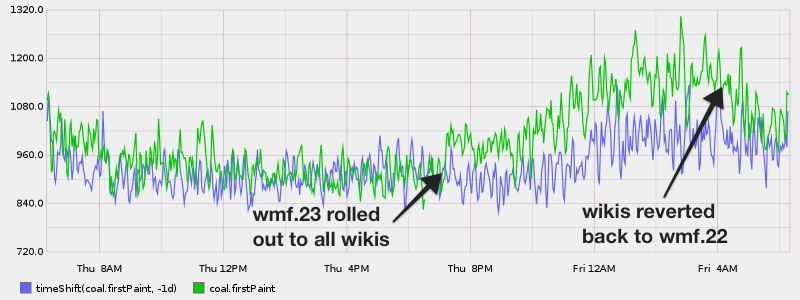The roll-out of 1.27.0-wmf.23 to all Wikipedias coincided with a significant (~150ms) increase in first paint time for Wikimedia page views. First paint time is the time it takes the user to see anything on the screen after clicking on a link. Keeping it low is crucial to good user experience.
In the graph below, the green line shows median first paint time in milliseconds over the course of the past 24 hours (at the time of writing). The blue line shows what the value was that time the day before. You can see they diverge shortly after 19:00 UTC and converge around 4:20 UTC.

